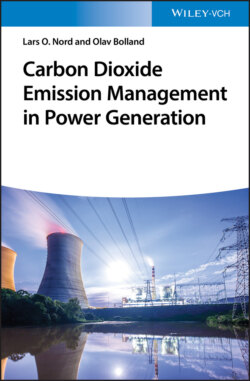Читать книгу Carbon Dioxide Emission Management in Power Generation - Prof. Lars O. Nord - Страница 25
1.10 Show-stoppers for CCS Deployment?
ОглавлениеA number of studies have been conducted to find out what people in general (Curry et al. 2005; Itaoka et al. 2005; Uno et al. 2005; Huijts et al. 2007; Tokushige et al. 2007; Bachu 2008) and also what the experts (Gough 2008) think about the possibility and difficulties for the extensive use of CCS. Based on these reports, it seems that technology issues are not what people think will be stopping large-scale CCS from happening. The perceptions of environmental non-government organisations (NGOs) regarding CCS vary considerably. Most NGOs accept the necessity of CO2 capture and storage in geologic formations, while only a small fraction does not (Wong-Parodi et al. 2008).
There are two main issues of concern: one is the lack of long-term policy and national and international regulatory frameworks and the other is the likely high and yet uncertain cost. Regulatory frameworks are necessary for commercial operation of CCS, and they are also necessary on an international level in order to create trust in CCS as a large-scale measure for reducing the emissions of greenhouse gases (Van Noorden 2010). One show-stopper could be that some countries take on the burden of CCS, while others do not, and that the latter benefit economically. A policy issue that needs to be addressed is the ownership of the pore space and the competition between storage rights and other mineral rights. Some people fear that CO2 storage can reduce the economic value of underground structures where coal mining, oil production, or mining of minerals may take place in the future. Another policy issue is long-term (100, 500, and 1000 years) liability. It is not likely that private companies will have the longevity required for the time scale of safe storage of CO2. In general, industry will not assume an indefinite and undefined risk. For this reason, the current thinking is that, after the active injection period, a closure period should follow where the operator demonstrates the safety of the storage, after which the state will assume long-term liability for the site. A possible complication here is when or if a CCS project is international in the sense that the CO2 is captured and stored in different countries.
Public acceptance is an issue of major concern, and many people are worried about the storage of CO2. The ‘not in my backyard’ (NIMBY) syndrome is growing globally, whereby the public in general accepts the technology and its benefits, but the local public does not want to accept the local economic and societal cost resulting from a CO2 pipeline and storage. In this context, the need to resolve health, safety, and environmental (HSE) issues at an early stage is very important. An incident in the phase of installing and establishing CCS technologies can have a crucial impact on public acceptance and further development.
The risk of having a major leakage of CO2 from a pipeline will most probably set a limit on the possibility of transporting CO2 from a capture plant to a storage site. Sources and sinks of CO2 do not in general match well (IPCC-CCS 2005), and it will be necessary to have a significant amount of CO2 transported in pipelines. Assuming large-scale CCS with a larger number of capture plants, it is difficult to avoid transport of CO2 through densely populated areas. A major leakage from a pipeline is potentially dangerous for humans. Therefore, it is of great importance to understand the human reaction to various extents of CO2 exposure and, with this knowledge, generate the necessary safety measures. Issues could also arise from the transnational transport of CO2 because of legal aspects (Leung et al. 2014).
Leakage of CO2 from an underground storage site is also of concern. A major leakage from a storage site may irreversibly reduce the credibility of CCS. It is important and also difficult to inform society about the mechanisms of CO2 storage and CO2 flow underground and to deal with the risk of leakages, not least, mentally.
The whole process of CO2 capture, transport, and storage combines not only existing and well-understood technologies in a new context but also new methods, unknown operating regimes, and quantities. This combination holds a lot of risk for both the separate process steps and the total technology. As for the capture part, these concerns are connected to the maturity of the novel technologies themselves and also with regard to the large scales of CO2, which need to be captured and stored. Moreover, the assessment of these risks in a cost-efficient and systematic manner is very important. When it comes to transportation, the limited operating experience with CO2 is a problem, as the standards for existing pipeline transportation cannot easily be transferred one-to-one. The aspect regarding generally consistent guidelines can also be applied to the storage locations. Moreover, monitoring and safety issues regarding the sites, wells, and the injection itself can also be seen as critical points (DNV 2010).
